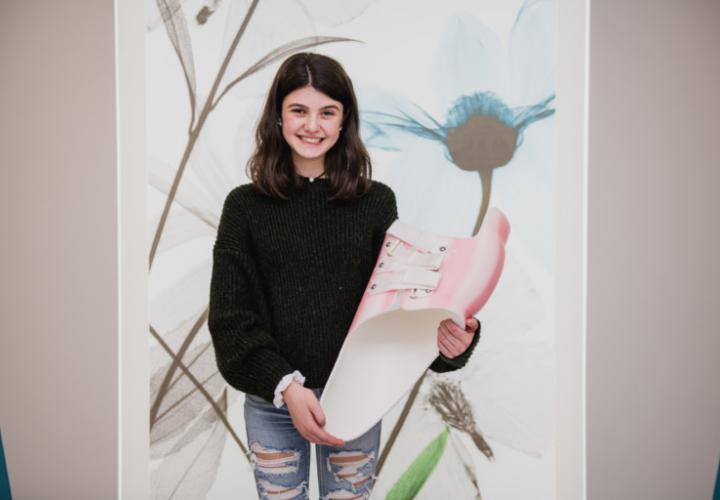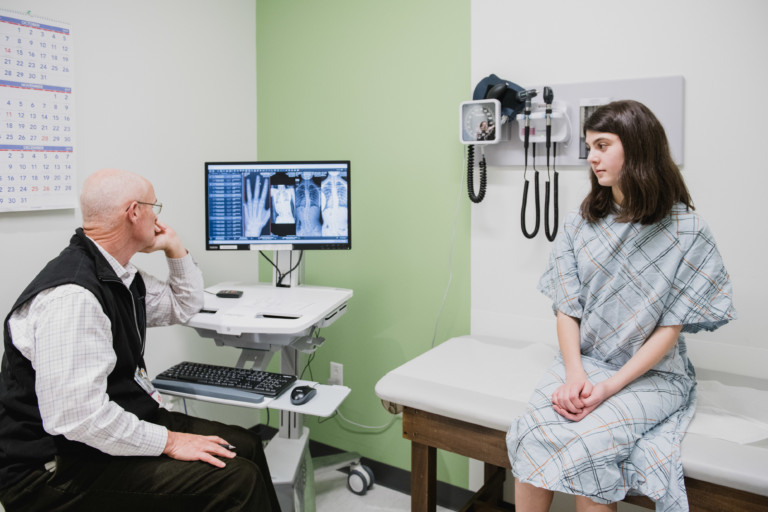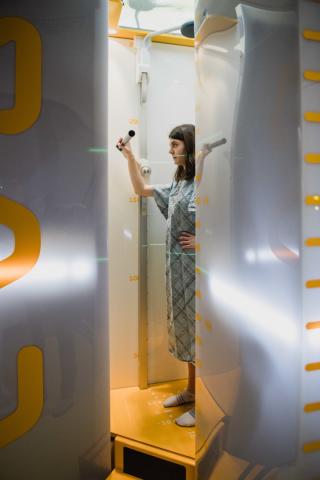“She’s a great role model”
Lindsay’s parents encourage her to think of scoliosis as just one piece of who she is, rather than something that defines her. “You fit the condition into your life, not your life into the condition,” says Jennifer.
Lindsay has taken that advice and run with it – or rather, danced with it. With Dr. Thomson’s blessing, she dances competitively in lyrical, pointe ballet, jazz, tap and musical theater, with dance classes five nights a week. Every Wednesday, she teaches a tap and jazz class to a group of awestruck seven- and eight-year-olds. Meanwhile, she’s getting straight As in the ninth grade.
She makes it look easy, but amid all the demands and pressures of a busy teenager, that’s not always the case. At slumber parties, she’s the only one in a back brace. Physical therapy and X-rays and fittings take time away from homework and dance and friends. Every time she gets a new brace, there’s an inevitable adjustment phase, with nights tossing and turning trying to get comfortable enough to fall asleep while encased in hard plastic.
But she usually finds a way to bring herself around: to keep the brace on; follow the treatment plan; stay positive.
She returns, again and again, to the progress she’s making. Once she’s done growing in a few years, her curve should hold steady on its own, no bracing required. “I’m know I’m headed in a good direction,” she says. She’s grateful for what this experience has taught her about herself and her own resolve. She’s handled it all, says mom Jennifer, with maturity and grace.
Her team at Connecticut Children’s has noticed.
“Lindsay’s very positive and very interested in what’s going on,” says Dr. Thomson. “She takes an active role in her health. She’s a great role model.”
“Be aware of other girls just like you”
That’s just what Lindsay aims to be: a role model. As her own journey with scoliosis continues, she is driven by the thought of other teens beginning theirs.
She’s interested in a career as a pediatric orthotist, the medical specialist who makes and fits braces and splints. “I think going through this as a kid will really help me relate to my patients,” she says. (Her inspiration is her own orthotist at Connecticut Children’s, Megan Chamis.)
She’s a member of the support network Curvy Girls, which connects support groups for teens with scoliosis. There are local meetings throughout the year, and an annual conference with attendees from all over the world. Last year, she raised money that made it possible for a young women from Africa and her mother to attend the annual conference in New York. Eventually, she hopes to be a chapter leader.
It was at the Curvy Girls 2018 conference that Lindsay wrote the letter to her future self. In it, she reminded herself that she has family, friends and doctors to turn to every time she feels frustrated or tired. She vowed to be someone who offers the same support to others.
“Be aware of other girls just like you,” she wrote. “Stop and talk to them and help them.”
“This is who you are,” she added. “You need to embrace it.”



